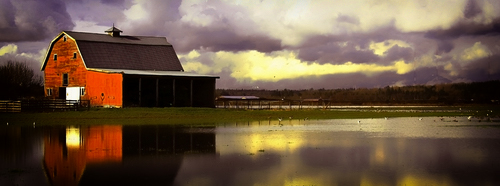In 2013, USDA ARS reported that climate change and extreme weather will have significant long lasting effects on all aspects of agricultural production in the United States. You’ve likely already experienced the sour taste of what is now becoming the norm. Extreme weather, unpredictable rainfall, higher temperatures and other factors that keep you awake at night will be a regular part of the dialogue when it comes to farm management planning in the short and long term.
There is a growing consensus, however, that the way you approach these challenges will make all the difference. Reacting to each situation is not likely to provide long-term stability for your farm. In contrast, a proactive approach that anticipates climate and weather variability, informed by personal knowledge of local short-term climate patterns, is more likely to result in future scenarios that have positive and productive outcomes for you. This is also why NEWA is becoming an increasingly important resource – it provides real-time short term forecasting tools needed to make well informed decisions.
Here are some important weather and climate facts that NEWA helps address.
- Globally, average temperature will rise by 0.18°F (0.1°C) per decade during our lifetime. This doesn’t seem like much right? But remember this is an average. The way this really looks on your farm is bigger and more extreme temperatures in both directions throughout the year and more extreme weather.
- Even predictable increases in temperature over time can have disproportionately negative impacts on current agricultural practices if adaptive plans are not made. If you do not have a plan to be flexible in adverse growing conditions, the long-term outlook is less certain.
- On the positive side, climate change will create opportunities for innovation and investment in agriculture. A grower who is aware and has a plan for adaptability in place, becoming an early adopter of new approaches and technology as part of that plan, will be well-positioned to take advantage of these opportunities.
